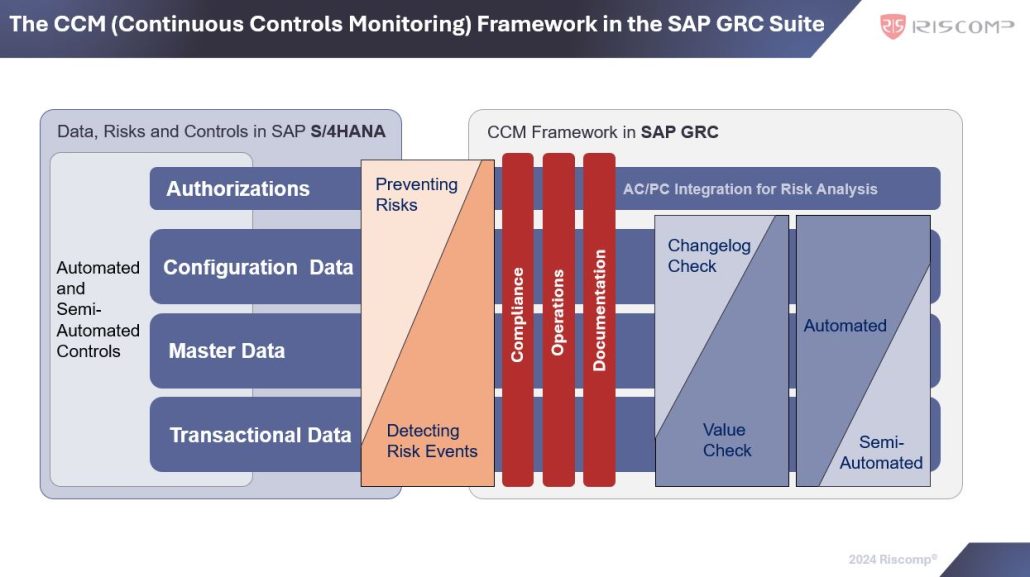Since the birth of SAP Process Control around 2007, the CCM framework has undergone significant evolution and impressive improvements. Numerous SAP customers benefit from its capabilities, serving both Compliance and Operations, and providing the following benefits:
- Lower risk exposure and higher reliability of controls
- Timely execution of risk-related decisions
- Reduced manual efforts for:
- Testing
- Control performance
- Other monitoring activities
- Improved business processes and activities, e.g., by detecting deviations from predefined standards while adhering to compliance policies.
We have created a graphical summary for you, reflecting some key risk, end-user, and implementation aspects of the CCM framework in SAP GRC.

- Prevention is the best way to address risks. Implementing preventative CCM scenarios is also the most cost-efficient because the underlying data model is relatively simple, and the performance impact is the lowest. Checking configuration (or IT Application Controls) and authorizations are the two most important types of controls.
- There are two main goals when deploying the CCM framework: supporting Compliance or Operations. While the Test of Effectiveness or embedded Assessment are two main approaches within Compliance, the Operations perspective offers a much wider variety of options. These options include monitoring workflow, standalone usage of business rules, direct integration with the manual control performance workflow, and more.
- There are several ways to enable Authorizations Risk Analysis in SAP Process Control. We will dedicate one of our next Expert Insights posts to this topic.
In an upcoming post, we will also delve deeper into the CCM Framework and address the following frequently asked question: how can receiving the same results again and again be avoided?
If you’re eager to explore more about SAP Process Control and how it can optimize your compliance and operational processes, feel free to reach out to us!
